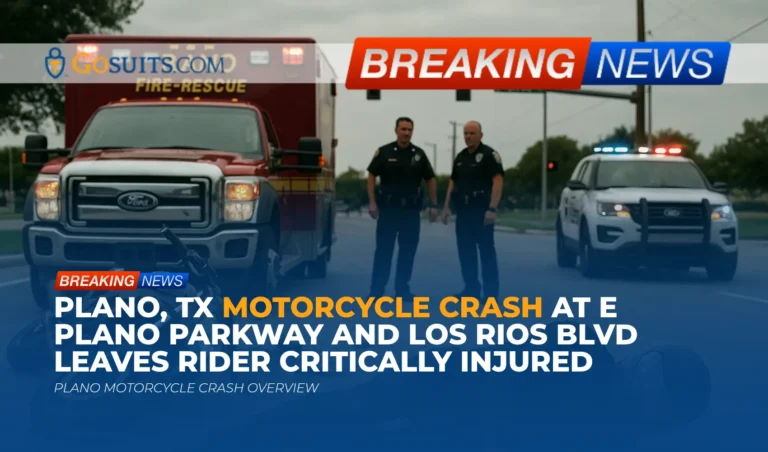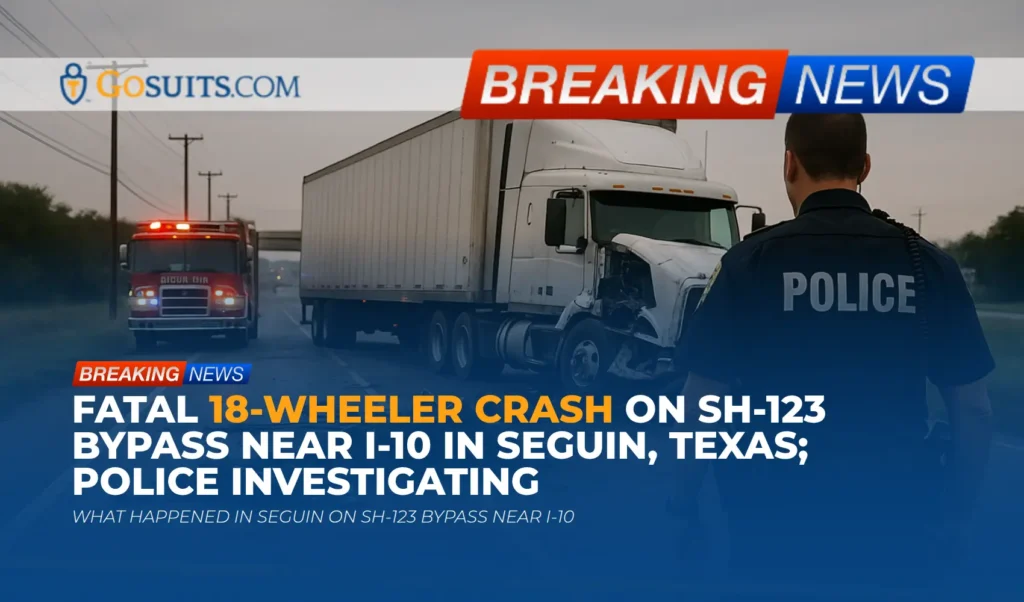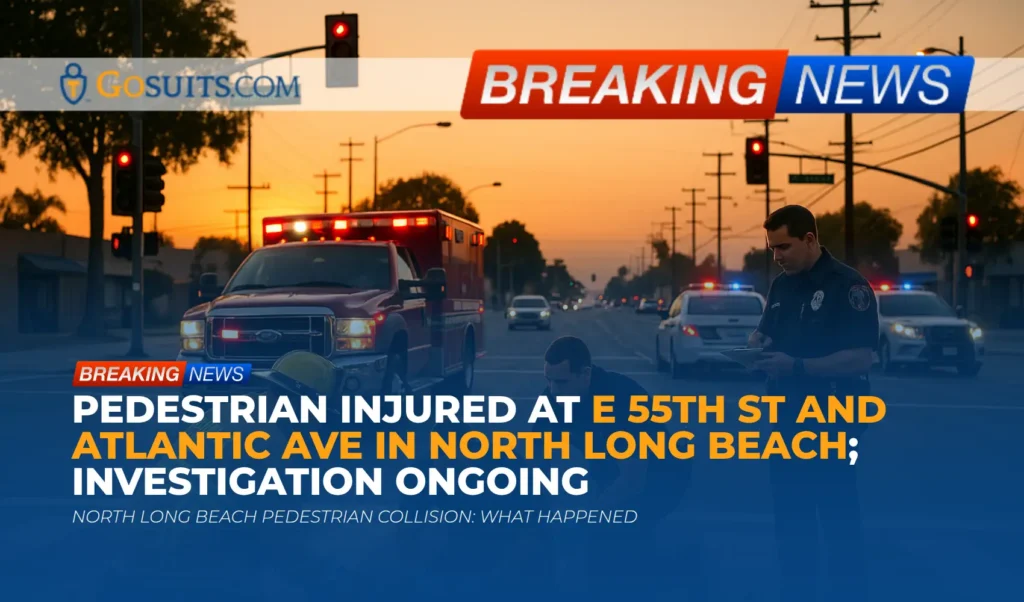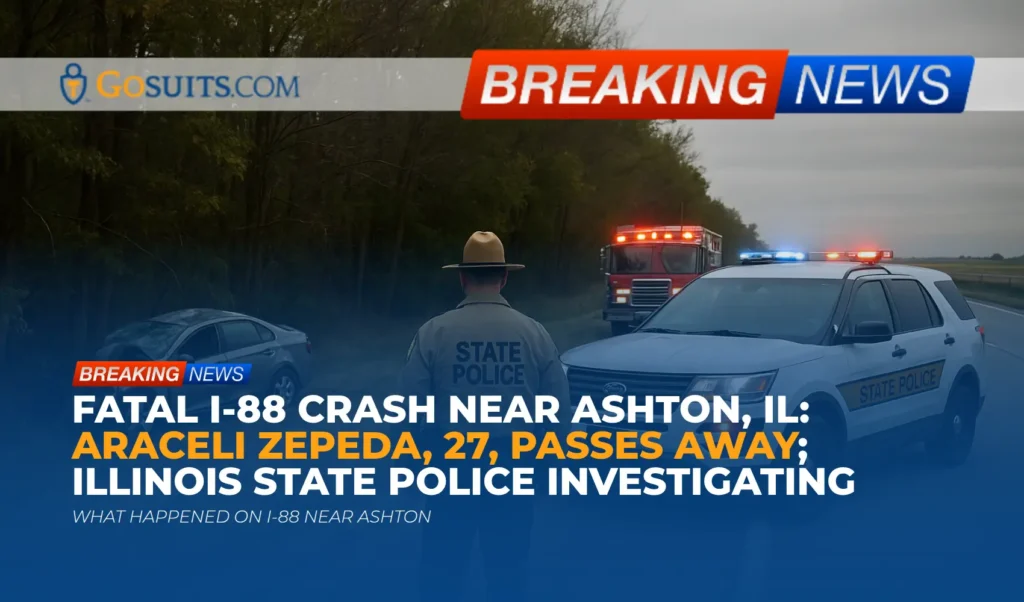- Plano motorcycle crash overview
- What is known, and what remains unknown
- Why intersections are especially dangerous for riders
- Texas safety and traffic laws that often matter after a motorcycle crash
- Immediate steps to protect health, rights, and evidence
- How to obtain official records and information in Plano and across Texas
- Civil liability considerations under Texas law
- Insurance issues that commonly arise after a Texas motorcycle crash
- Time limits, investigations, and why acting promptly matters
- Helpful public resources for medical care and public information
- Commentary from Gosuits Plano, Texas Personal Injury Attorney
- Why acting promptly matters after a serious motorcycle crash
- Sources
Plano motorcycle crash overview
Plano, Texas authorities responded to a serious crash on Tuesday, October 22, 2025, at the intersection of E Plano Parkway and Los Rios Boulevard. Dispatch reports indicate a motorcycle was involved, and the rider sustained life-threatening injuries. Plano Fire-Rescue units and Plano Police officers responded, provided emergency care at the scene, and transported the rider for further treatment. Due to the severity of the incident and to protect responders, authorities temporarily closed lanes in the area during the emergency response and investigation.
As of the latest updates in the report provided to us, officials have not released additional details about how the collision occurred or whether any other vehicle was involved. The Plano Police Department is investigating the circumstances leading up to the crash.
Our thoughts are with the injured rider, loved ones, and everyone affected. Crashes like this are deeply upsetting for families and the broader community, and the road to recovery can be long. The purpose of this article is to share practical information that may help those impacted understand the process that often follows a serious motorcycle crash in Texas.
What is known, and what remains unknown
Known facts based on the initial report
- Location: Intersection of E Plano Parkway and Los Rios Boulevard, Plano, Texas.
- Date: Tuesday, October 22, 2025.
- Vehicles: A motorcycle was involved.
- Injuries: The rider suffered critical, life-threatening injuries.
- Response: Plano Fire-Rescue medics treated and transported the rider. Plano Police secured the scene and initiated an investigation. Traffic lanes were temporarily closed.
Unknowns pending investigation
- Cause: Investigators have not released a cause or contributing factors.
- Other vehicles: No confirmed information regarding involvement of other vehicles.
- Traffic controls: No public details yet on possible signal timing, visibility conditions, or roadway factors.
In the early phase of a crash investigation, it is common for officials to withhold details until statements are taken, scene measurements are analyzed, and any available video or data are reviewed.
Why intersections are especially dangerous for riders
Intersections concentrate crossing and turning traffic, which increases conflict points and the possibility of a driver misjudging a rider’s speed or presence. National roadway safety agencies consistently identify intersections as a high-risk environment for serious injury crashes involving motorcycles.
- Visibility and size: Motorcycles present a smaller profile, making it easier for drivers to fail to see them when turning or merging.
- Left-turn conflicts: Many serious motorcycle collisions occur when a driver turns left across the rider’s path.
- Signal timing and phasing: The specific timing of green, yellow, and protected arrows can influence driver behavior and decision-making.
- Speed and gap acceptance: Drivers may misjudge an approaching motorcycle’s speed, leading to unsafe gap acceptance at intersections.
Federal sources note that riders bear a disproportionate share of severe outcomes in traffic crashes due to limited physical protection. National Highway Traffic Safety Administration data reflect that motorcyclists represent a significant share of traffic fatalities relative to their share of vehicle miles traveled, and intersection-related conflicts are a recurring pattern in serious incidents.
Texas safety and traffic laws that often matter after a motorcycle crash
Helmet use
Texas law generally requires motorcycle operators and passengers to wear a helmet. Riders age 21 or older may ride without a helmet if certain conditions are met, such as completing a motorcycle operator training and safety course or carrying appropriate insurance coverage. See Texas Transportation Code Chapter 661.
Left-turn yielding and right-of-way
When turning left at an intersection, a driver must yield the right-of-way to a vehicle that is approaching from the opposite direction and is in the intersection or so close as to be an immediate hazard. See Texas Transportation Code § 545.152. This rule frequently comes into play in motorcycle collisions at intersections.
Crash reports and release of records
Release of Texas crash reports is governed by statute, which specifies who may obtain them and under what conditions. See Texas Transportation Code § 550.065.
Proportionate responsibility
Texas follows a modified comparative responsibility framework. A claimant who is more than 50 percent responsible for their own harm is generally barred from recovering damages. The allocation of fault is fact specific and determined by the evidence. See Texas Civil Practice and Remedies Code § 33.001.
Immediate steps to protect health, rights, and evidence
After a severe crash, medical care and safety come first. The following steps are commonly important once the scene is secure and urgent medical needs are addressed.
- Prioritize medical treatment: Accept transport and follow through on diagnostic testing. Retain discharge instructions, imaging, and referrals. Consistent care helps recovery and creates a clear medical record.
- Preserve physical evidence: Keep the motorcycle, helmet, riding gear, and any damaged items in their post-crash condition if possible. Do not authorize disposal or repairs until documentation is complete.
- Document injuries and recovery: Photograph visible injuries over time and keep a pain and limitations journal. Save receipts and records for medications, devices, and home care needs.
- Identify potential witnesses: If anyone at the scene offered their contact information or if nearby businesses may have exterior cameras, make note promptly. Video is often overwritten within days.
- Be cautious with insurance communications: Before giving any recorded statement to an insurance company, speak with an attorney. What is said to an insurer can be used later, and early statements may be incomplete or taken before the full extent of injuries is known.
How to obtain official records and information in Plano and across Texas
Police crash report
In Texas, crash reports are released under state law. Eligible requesters can obtain the report, which often includes the officer’s narrative, diagram, and contributing factors. See Transportation Code § 550.065 for who may obtain a report. Reports are typically available through the statewide Crash Records Information System administered by the Texas Department of Transportation. For guidance on requesting crash records, consult TxDOT resources regarding crash records and purchase procedures.
911 calls and dispatch logs
Audio recordings, computer-aided dispatch logs, and related materials may be requested under the Texas Public Information Act. Some information may be redacted by law. See the Texas Office of the Attorney General’s overview for members of the public at texasattorneygeneral.gov.
Medical examiner and autopsy records, if a death occurs
If a crash results in a fatality, the county medical examiner investigates cause and manner of death under Texas law. The process and availability of reports are guided by state statutes and local procedures. See Texas Code of Criminal Procedure Chapter 49 regarding inquests and medical examiner jurisdiction. In Plano, matters are within Collin County, which maintains a medical examiner’s office. Families can request guidance from the county office about records when applicable.

EMS and hospital records
Emergency medical services run reports and hospital records are protected health information. Patients, and in certain circumstances their personal representatives, have a right to access their records under federal law. Guidance from the U.S. Department of Health and Human Services on the right of access is available at hhs.gov.
Traffic signal timing and roadway information
Traffic signal timing plans, maintenance logs, and engineering documents may be obtainable from the local transportation or traffic engineering department under the Texas Public Information Act, with certain exceptions. Requests should be clear and date specific. Guidance on public records requests is provided by the Attorney General at this page.
Civil liability considerations under Texas law
Each crash is unique, and investigators and reconstruction professionals analyze physical evidence, vehicle damage, roadway conditions, signal data, electronic control module information, and witness accounts. From a civil-injury perspective, several patterns frequently arise in urban intersection motorcycle crashes:
- Left-turn conflicts: A common scenario is a driver turning left across a motorcycle’s path without yielding as required by § 545.152. Liability may focus on lookout, speed estimation, and gap acceptance.
- Violation of traffic controls: Entering on a red light or improper right-on-red turns can place cross traffic in danger. Signal timing data and video can be important.
- Following too closely or unsafe lane changes: Although this crash’s cause is not yet public, in many cases motorists fail to maintain a safe following distance or change lanes into a motorcyclist’s lane due to inadequate lookout.
- Roadway or signal issues: If a malfunctioning signal or unreasonably dangerous roadway condition is implicated, claims against a governmental unit may be explored under the Texas Tort Claims Act. Such claims have unique notice, scope, and immunity provisions. See Texas Civil Practice and Remedies Code Chapter 101.
- Comparative responsibility: Texas law may reduce or bar recovery if a claimant is found to share fault. Allocation is evidence-driven. See § 33.001.
For families and injured riders, it is important to avoid speculation and instead focus on gathering the objective records and evidence that will ultimately clarify what happened.
Insurance issues that commonly arise after a Texas motorcycle crash
Liability, PIP, and UM/UIM coverage
Texas law sets minimum liability limits for autos and requires insurers to offer certain coverages like Personal Injury Protection and uninsured or underinsured motorist insurance. These coverages can be important in motorcycle crashes, particularly when the at-fault driver is uninsured, flees the scene, or carries low limits. The Texas Department of Insurance provides consumer guidance on coverages, claim handling, and rights under Texas insurance law. See Texas Department of Insurance consumer resources for auto insurance and claims.
- Liability coverage: Pays for bodily injury and property damage that a policyholder causes to others, up to the policy limits.
- PIP: Pays medical expenses and certain nonmedical costs like lost income, regardless of fault, depending on the policy and state law.
- UM/UIM: Protects when the at-fault driver has no insurance or insufficient limits.
Recorded statements and early settlements
- Avoid recorded statements without counsel: Statements can be used to challenge fault or minimize injuries. Always consider consulting an attorney first.
- Beware of early offers: Early settlements can be offered before the full scope of injuries is known. Once a release is signed, claims are generally closed.
- Medical billing coordination: Health insurance, PIP, and third-party liability coverage may interact. Subrogation rights can affect net recovery and should be reviewed carefully.
Property damage and gear
Motorcycle damage, custom parts, and protective gear like helmets and jackets are compensable property items, subject to policy terms and Texas law. Document all items with photos and receipts when possible.
Contact an attorney before filing a claim
If considering a claim, it is advisable to contact an attorney for a free consultation before calling any insurance company. Statements made to insurers can be used later. An attorney can help evaluate coverage, liability, and documentation needs.
Time limits, investigations, and why acting promptly matters
Texas has time limits to bring civil actions related to personal injury. While some exceptions can apply, the general statute of limitations for personal injury claims is two years from the date of injury. See Texas Civil Practice and Remedies Code § 16.003. Claims involving governmental entities may have shorter formal notice deadlines.
Acting promptly supports both health and the preservation of evidence:
- Medical documentation: Early evaluation and consistent follow-up create clear records that tie injuries to the crash.
- Evidence preservation: Business cameras commonly overwrite footage in days. Vehicles can be moved or repaired. Traffic data may be purged according to agency schedules.
- Witness memory: Memories fade quickly. Timely contact improves reliability of accounts.
- Insurance deadlines: Policies may impose prompt notice and proof-of-loss timeframes.
Helpful public resources for medical care and public information
Trauma care resources
Severely injured patients are often transported to designated trauma centers. The Texas Department of State Health Services provides information about the state’s trauma system and facility designation program. See dshs.texas.gov/emstraumasystems for a statewide overview and information about trauma designation in Texas.
Obtaining records and understanding public information rights
- Crash report access: See Transportation Code § 550.065 for eligibility and release provisions. TxDOT administers statewide crash records requests.
- Public Information Act: The Texas Public Information Act outlines how members of the public can request government records. The Attorney General provides plain-language guidance at this page.
- Medical records rights: Patients and their personal representatives can learn about federal HIPAA access rights at HHS’s right-of-access page.
- Medical examiner process: For deaths under investigation, consult state law regarding inquests and medical examiner duties at Code of Criminal Procedure Chapter 49.
- Insurance guidance: The Texas Department of Insurance offers consumer information about auto coverage and claims at tdi.texas.gov.

Commentary from Gosuits Plano, Texas Personal Injury Attorney
Our hearts go out to the rider and family affected by the serious crash at E Plano Parkway and Los Rios Boulevard. This commentary is offered for educational and general informational purposes. Intersections present unique hazards for motorcyclists because small visual profiles and split-second decisions often collide. Until the investigation concludes, it is important not to speculate. The focus should be on thorough fact gathering, medical care, and preserving all available evidence, including 911 records, crash reports, and any potential nearby video.
In our experience handling severe roadway cases, insurers often move quickly to gather statements and obtain authorizations that give them broad access to records. People coping with trauma may assume the insurer will guide them fairly. Adjusters are doing their jobs for their companies, and that can mean framing fault or injuries in ways that reduce payouts. Small details in a recorded statement or a gap in treatment can become leverage against a claim.
An early, no-cost legal consultation can help demystify the process. It can also help prevent avoidable missteps, such as providing a recorded statement before understanding how liability, coverage, and Texas law intersect in motorcycle cases. A consultation is not a commitment. It is a chance to ask questions, learn which records to request first, and understand how to protect the value of a claim while the investigation unfolds.
Why acting promptly matters after a serious motorcycle crash
- Secure medical care now: Early diagnosis and treatment protect health and create clear documentation linking injuries to the crash.
- Preserve evidence before it is lost: Video systems overwrite quickly. Vehicles get moved or repaired. Request that involved vehicles and key gear be preserved in their current condition until a thorough inspection is complete.
- Request official records in sequence: Start with the police crash report, then pursue 911 audio and dispatch logs, scene photos, and traffic signal data. Use the Texas Public Information Act framework to request agency records with date, time, and location specifics.
- Be cautious with insurance communications: Before any recorded statement, obtain a free legal consultation to understand rights, available coverage, and how statements can affect liability assessments and recovery.
- Track expenses and losses: Keep a folder with medical bills, receipts for medications and equipment, repair estimates, towing and storage bills, and documentation of missed work. Accurate records support a full accounting of losses.
- Know the timelines: Texas has legal deadlines for injury claims, and governmental claims can involve shorter notice requirements. Acting early helps avoid missed deadlines and builds a stronger factual record.
Sources
- National Highway Traffic Safety Administration, Motorcycles
- Federal Highway Administration, Intersection Safety
- Texas Transportation Code Chapter 661, Protective Headgear for Motorcycle Operators and Passengers
- Texas Transportation Code § 545.152, Turning Left
- Texas Transportation Code § 550.065, Release of Accident Reports
- Texas Civil Practice and Remedies Code § 33.001, Proportionate Responsibility
- Texas Civil Practice and Remedies Code Chapter 101, Tort Claims
- Texas Civil Practice and Remedies Code § 16.003, Limitations Period for Personal Injury
- Texas Department of State Health Services, EMS and Trauma Systems
- Texas Attorney General, Public Information Act Guidance
- U.S. Department of Health and Human Services, HIPAA Right of Access
- Texas Department of Insurance, Consumer Insurance Information






